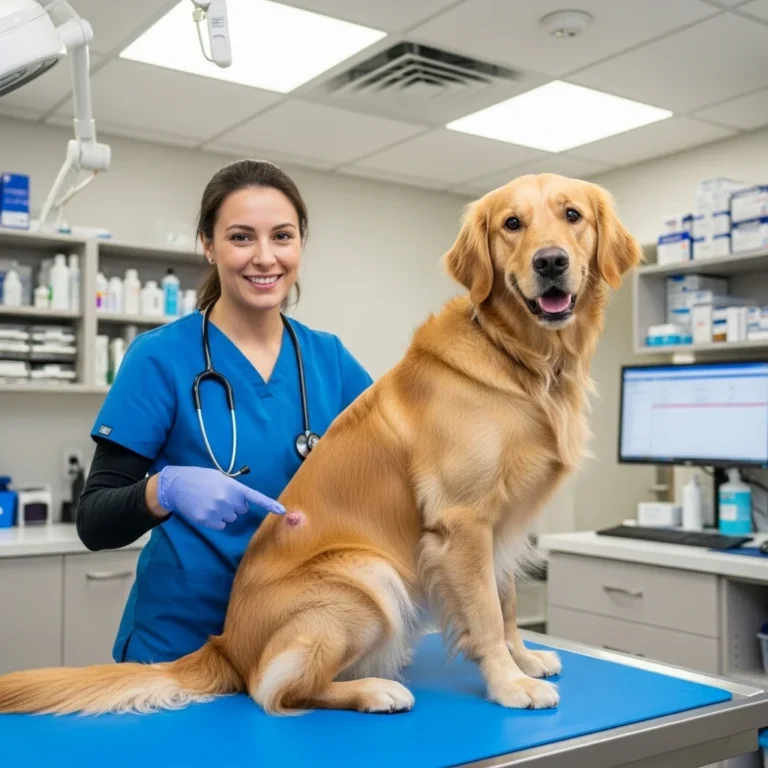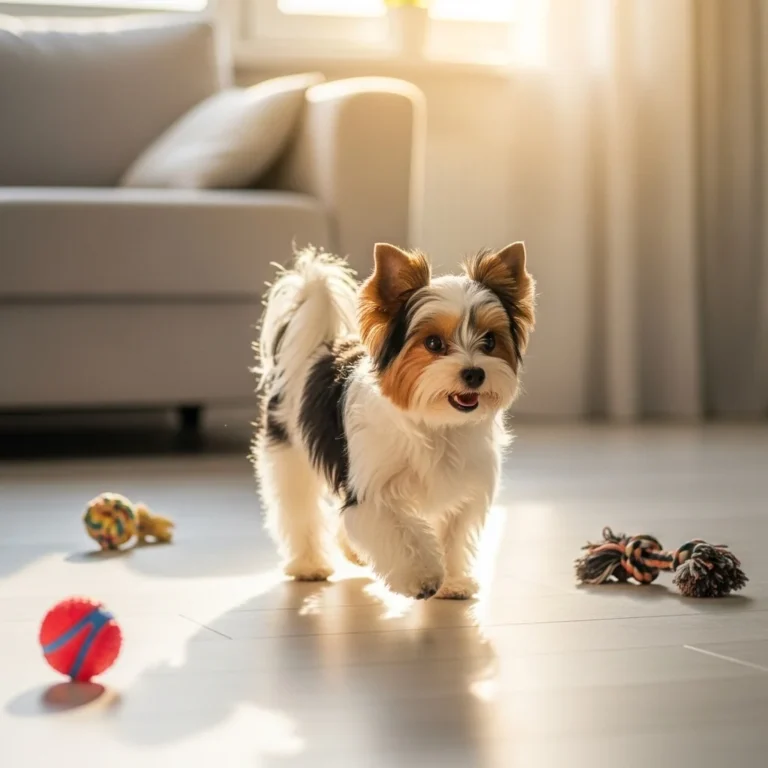
sebaceous cyst dog
Hey there, paw-rent! Let me ask you a question. Have you ever been in the middle of a blissful belly rub session with your furry best friend when your fingers suddenly brush against a weird little bump? Your heart does a little flip-flop, and your mind immediately races, doesn’t it? I’ve been there more times than I can count! As a proud dog mom and a bit of a canine skin-issue sleuth, I can tell you that one of the most common culprits behind these mysterious lumps is something called a sebaceous cyst.
Now, I know “dog sebaceous cyst” sounds like a scary, technical term you’d hear in a vet’s office. But let’s break it down into simple, doggo-friendly terms. Think of it like a tiny, blocked pore, similar to a pimple we might get, but just a bit more… substantial. It’s usually totally harmless!
Imagine your dog’s skin is a magnificent, self-oiling machine. It’s constantly producing natural oils to keep that coat of theirs gloriously shiny and healthy. These oils come from tiny factories called sebaceous glands. Sometimes, one of these little factories gets a bit clogged up. When that happens, the oil and other skin debris have nowhere to go, so they start to pool up, forming a little balloon-like sac right under the skin. And voilà! You’ve found yourself a sebaceous cyst on dog.
The best news? These little bumps are almost always benign buddies, not cancerous nasties. Most of the time, your dog won’t even notice it’s there! But, like any good dog blogger, I’m here to give you the full scoop. Sometimes these cysts can decide to rupture or get infected, and that’s when they need a little extra TLC. So, grab a treat for your pup and one for yourself, and let’s dive nose-first into everything you need to know about these curious little lumps.
Understanding Sebaceous Cysts
What is a sebaceous cyst in a dog?
Okay, let’s get a real clear picture in our heads. Imagine a sebaceous cysts in dogs as a tiny, self-contained little package, like a secret pouch, hidden just under your dog’s skin. More specifically, it’s a little sac that forms when a sebaceous gland – remember, those tiny oil factories – gets blocked. When the duct (the exit door for the oil) gets plugged, the sebum and dead skin cells keep being produced but become trapped. They accumulate, and presto, you have a distinct lump.
Dr. Sarah Johnson, a veterinary dermatologist and author of “Skin Deep: A Vet’s Guide to Canine Dermatology,” explains it perfectly: “A sebaceous cysts dog is essentially a mini-balloon filled with oily, cheesy material, which is trapped sebum and cellular debris. It’s benign, meaning it’s not cancerous, and is usually a consequence of a blocked or damaged sebaceous gland.” These cysts can be as small as a pea or as large as a grape, and they’re usually pretty soft and squishy to the touch. You might even be able to wiggle them around a little bit!
Are sebaceous cysts common in dogs?
You might be surprised (and relieved!) to learn just how common these things are. If you’ve been a dog parent for a good number of years, chances are high you’ve either had a close encounter with one or have a friend who has. They are one of the top skin lumps that vets see on a daily basis.
“It’s fair to say that almost every veterinarian sees several cases of sebaceous cysts every week,” notes Dr. Emily Carter, a general practice veterinarian with over 15 years of experience, currently at PetCare Animal Hospital (check out their services at www.petcareanimalhospital.com). “They’re incredibly common, particularly as our furry friends get older. It’s just part of the aging process for some dogs, much like we might develop skin tags or moles.” So, if you find one, take a deep breath. You’re definitely not alone in this!
What causes sebaceous cysts in dogs?
This is the million-dollar question, right? The truth is, the exact “why” can sometimes be a bit of a mystery, but we dog experts have a pretty good list of the usual suspects. The main event is always a blocked sebaceous gland duct. But what is the culprit doing the blocking?
A few things can be the party pooper:
- Trauma or Injury: A simple cut, scrape, or even a persistent scratch in one spot can damage a sebaceous gland, leading to a blockage.
- Inflammation: Skin inflammation from allergies, infections, or other skin conditions can cause swelling that blocks the duct.
- Genetic Predisposition: Some dogs are just more prone to them, which definitely suggests a family connection. We’ll talk breeds in a second!
- Hormonal Imbalances: While not as clear-cut as in humans, some vets believe hormonal changes could play a role in altering how much oil the skin produces.
- Poor Grooming: For our fluffier friends with very dense coats, inadequate grooming can sometimes lead to blocked pores if dead skin and debris aren’t regularly brushed away.
- Aging: As our wise, grey-muzzled companions age, their skin changes, and the likelihood of developing these benign lumps increases.
“It’s rarely one single cause,” explains Dr. Mark Thompson, a veterinary internal medicine specialist. “Often, it’s a combination of factors. For instance, an older dog with some underlying skin sensitivity might be more susceptible to developing a cyst after a minor skin irritation.”
Are certain dog breeds more prone to sebaceous cysts?
You bet! Just like some families might be more prone to, say, freckles, certain dog breeds seem to win the genetic lottery for sebaceous cysts. It’s all in the genes!
Breeds that we often see on the “more prone” list include:
- Poodles (especially Standard Poodles): These brilliant, elegant dogs are known for their gorgeous coats, but also for their tendency to develop various skin issues, including our friend the sebaceous cyst.
Related: https://dogsblogss.com/?s=Poodles+ - Schnauzers (especially Miniature Schnauzers): Their wonderfully coarse hair and sometimes oilier skin might contribute to those pesky blockages.
related: Why Mini Schnauzers Are the Best Pets - Yorkshire Terriers: These tiny, spirited pups can also be predisposed to a few skin concerns.
- Basset Hounds: All those adorable skin folds and loose skin can sometimes trap debris, potentially leading to a blocked gland.
- Siberian Huskies: Known for their breathtaking thick coats, they can also be prone to certain skin conditions.
related: Miniature Siberian Husky Grooming Guide
Now, remember, any dog, from a tiny Chihuahua to a great Dane, can develop a sebaceous cyst. But if your pup is on this list, it’s just a good excuse for a few extra minutes of quality brushing and petting time to keep an eye out. Dr. Olivia Chen, a veterinary geneticist, advises, “If you’re considering a breed known for this, discuss it with your breeder. Reputable breeders often track such tendencies in their lines, even though cysts are generally benign.”
What do sebaceous cysts look like on a dog?
When you first spot one, it might just look like a small, raised bump. But if you’re having a closer look (with your vet’s permission, of course!), they have some tell-tale signs. They typically show up as:
- A single, well-defined lump: They usually have clear borders and aren’t all spread out.
- Soft to firm: Most feel pretty soft and squishy, but some can be firmer, especially if they’ve been there a while.
- Under the skin: While they make the skin above them stick out, the cyst itself is sitting just beneath the surface.
- Skin-colored or slightly bluish/greyish: The skin covering it usually looks normal, but sometimes it can have a slight tint from the stuff inside.
- Pore-like opening (sometimes): Here’s a key sign! You might occasionally spot a small, black dot or a tiny opening at the very center. This is the blocked pore! If it’s expressed (which is a job for the vet, not for you and me!), a cheesy, cottage-cheese-like, or even toothpaste-like material might come out. This stuff can be white, yellow, or brownish-grey and often has a… well, let’s call it a distinct, rancid odor.
“Many owners describe the contents as looking like cottage cheese or thick toothpaste,” says Dr. Brian Foster, a general practice vet who often shares advice on his blog, “Foster’s Furry Friends” (www.fostersfurryfriends.blog). “The texture and smell are key indicators, though you should never attempt to express a cyst yourself.”
Can sebaceous cysts appear anywhere on a dog’s body?
Yes, and isn’t that just the way? These little guys aren’t picky about their real estate! Sebaceous glands are found all over your dog’s body, anywhere there’s a hair follicle. So, a sebaceous cyst can basically pop up anywhere your dog has fur.
That said, some locations are more popular than others. You’ll often find them in spots with more friction or movement, or where the skin is a bit looser:
- On the back or trunk: Super common spots.
- Neck and shoulders: Often areas where collars can rub.
- Head: Especially around those sweet faces and ears.
- Legs: Less common, but they can appear here, too.
- Between the toes: This can be a particularly annoying spot for a dog, sometimes causing a little limp or discomfort.
“I’ve seen sebaceous cysts on almost every part of a dog imaginable,” says Dr. Christina Lee, an emergency veterinarian. “From the tip of their tail to between their paw pads. If there’s a hair follicle, there’s a sebaceous gland, and thus, a potential for a cyst.” So, during your regular cuddle and grooming sessions, make it a fun game to do a thorough “lump check” from nose to tail!
Symptoms and Diagnosis
What are the symptoms of a sebaceous cyst in a dog?
Most of the time, the one and only symptom is the lump itself. If it’s small and minding its own business, your dog probably won’t even know it exists, and you might not either until you’re giving them a good scratch behind the ears.
However, things can get a bit more obvious if the cyst decides to rupture or throw a party for some bacteria. In those cases, you might see:
- A visible lump: As we’ve described, a soft to firm bump under the skin.
- A small black dot or opening: Sometimes present right in the center of the lump.
- Discharge: If the cyst ruptures, you might see a white, yellow, or greyish, pasty, cheesy material oozing out. This discharge often has a strong, funky odor.
- Inflammation: The skin around the cyst might become red, swollen, or warm to the touch, especially if it’s infected.
- Pain or tenderness: Your dog might flinch or give you a look if you touch the area.
- Licking or chewing: They might become obsessed with the spot, licking or chewing at it constantly, which is a sure sign of irritation.
- Hair loss: The skin right over the cyst might lose hair from all the inflammation or licking.
- Pus: If an infection has moved in, the discharge might look more like pus, and the area will be very angry-looking.
Dr. Kevin Foster, a veterinary internal medicine specialist, advises, “Any new lump or bump, even if it seems benign, warrants a check. Pay close attention to your dog’s behavior around the lump. Are they bothering it? Is it changing in size or texture? These are important clues.”
How can I differentiate a sebaceous cyst from other lumps (e.g., lipoma, tumor)?
This is the big one, isn’t it? And I’ll be totally honest with you – it’s not always easy, even for us seasoned dog owners. This is exactly why a trip to see your vet is the best first step for any new lump. But, to satisfy your curiosity, here’s a little cheat sheet. Remember, these are just general guidelines!
- Sebaceous Cyst:
- Often relatively soft and a bit doughy.
- Might have that little central pore or opening.
- Could rupture and discharge that classic cheesy, smelly stuff.
- Usually sits close to the skin’s surface.
- Lipoma (a fatty tumor):
- Typically feels super soft, squishy, and movable under the skin – like a little stress ball or a bag of marbles.
- They rarely bother the dog unless they get huge.
- Does not have a pore and won’t discharge anything.
- Common in our older, sometimes chunkier, canine pals.
- Almost always a benign, harmless squishy lump.
- Malignant Tumor (a cancerous lump):
- Can look like anything – firm, hard, or sometimes soft.
- Might feel stuck or fixed to the tissues underneath, not moving freely.
- Can grow scarily fast or change shape.
- Might be ulcerated, bleed, or cause obvious pain.
- These are the ones we worry about most, but take a deep breath – they are less common than all the benign lumps.
- Abscess:
- Usually warm, painful, and swollen – it looks mad!
- Often pops up suddenly and grows quickly.
- Might rupture and release pus.
- Caused by a bacterial infection, often from a bite or puncture.
Dr. Sarah Johnson emphasizes, “Never try to self-diagnose a lump. Even I, with years of experience, rely on diagnostic tools to confirm the nature of a lump. The appearance can be deceiving.” She recommends using resources like the American Veterinary Medical Association’s guide on lumps and bumps (which you can find at www.avma.org/resources/pet-owners/animal-health/lumps-and-bumps) as a general reference, but always, always follow up with your vet.
Does a sebaceous cyst usually cause pain or discomfort to my dog?
In their happy, uncomplicated state, sebaceous cysts are typically pain-free and don’t bother your dog one bit. Many pups will have small sebaceous cysts for years without a single care in the world, and you’ll be the only one who knows it’s there.
But, the plot thickens if the cyst becomes:
- Very large: A big cyst can create pressure, leading to mild discomfort.
- Located in an awkward spot: Think between the toes, in an armpit, or under a collar – places where it gets constant friction.
- Ruptured: When a cyst bursts, the contents leak into the surrounding tissues. This stuff is super irritating, leading to inflammation, redness, and tenderness.
- Infected: This is when the real party foul happens. An infected cyst will be inflamed, warm, swollen, and often very painful. Your dog will lick or chew at it like it’s their job, and they might even feel lousy overall or get a fever.
“An intact sebaceous cyst is usually just a cosmetic concern,” explains Dr. Maria Rodriguez, a holistic veterinarian. “But once it ruptures or gets infected, the dog will definitely let you know it’s bothering them. That’s when veterinary intervention is most important to manage pain and prevent further complications.”
When should I be concerned about a lump on my dog?
While most lumps are the “good kind,” it’s always better to be the slightly over-cautious pet parent. You should be concerned and pick up the phone to call your vet for any lump that:
- Appears suddenly or grows like a weed.
- Changes in size, shape, or how it feels.
- Is hard as a rock or feels stuck in place.
- Causes your dog obvious pain, discomfort, or makes them lame.
- Is red, inflamed, warm to the touch, or looks swollen.
- Is oozing blood, pus, or any other discharge (even if you’re pretty sure it’s from a cyst).
- Becomes an open sore, scabby, or starts to bleed.
- Your dog is constantly licking, chewing, or scratching at it.
- Shows up in a weird place like on the eyelids, in the mouth, or you-know-where.
Basically, any lump that is new, changing, or clearly bothering your best friend needs a professional opinion. As Dr. Emily Carter often tells her clients, “If in doubt, get it checked out. It’s always better to find out a lump is harmless than to delay diagnosing something serious.” Catching things early is a game-changer.
How is a sebaceous cyst diagnosed by a vet?
When you take your dog to the vet for a lump, they don’t just guess! They have a super-sleuthing process to figure out exactly what it is.
- Physical Examination: First, your vet will do a full nose-to-tail exam, feeling the lump, checking its size, texture, and mobility, and seeing if it causes any pain.
- Fine Needle Aspirate (FNA): This is the most common first step, and it’s so cool! The vet uses a tiny needle to take a small sample of cells or fluid from the lump. It’s quick and most dogs don’t even flinch. They smear the sample on a slide and look under a microscope.
- For a sebaceous cyst, the FNA will show that oily, cheesy material and skin cells – no bad guys.
- For a lipoma, it’s just happy little fat cells.
- For a nasty tumor, they’d see abnormal, cancerous cells.
- For an abscess, it’s all pus and inflammation.
- Biopsy: If the FNA doesn’t give a clear answer, or if the vet is suspicious, they might suggest a biopsy. This means surgically removing a small piece of the lump or the whole thing and sending it to a specialist for a definitive diagnosis.
Dr. Olivia Chen highlights the importance of the FNA: “The fine needle aspirate is an invaluable tool for differentiating between a benign cyst, a fatty tumor, or something more concerning. It’s minimally invasive and provides crucial information quickly.”
Treatment and Management
Do sebaceous cysts in dogs need to be treated?
The answer here is a very diplomatic “it depends.” It all comes down to the specific cyst and your specific dog. Often, if a sebaceous cyst is small, not changing, not bothering your pup, and not in a tricky spot, the best treatment is no treatment at all! Your vet might suggest a “watch and wait” approach.
However, you should definitely consider treatment if the cyst:
- Ruptures: This opens the door for bacteria and infection.
- Becomes infected: Infected cysts are painful and can make your pup feel sick.
- Is large or growing: A big cyst is more likely to cause problems later.
- Is in an annoying location: A cyst in a skin fold, under a collar, or between the toes is a recipe for constant irritation.
- Is causing your dog discomfort: If your dog is licking or showing pain, it’s time to help them out.
- Is a cosmetic concern for you: While not medically necessary, some owners choose removal if the cyst is very prominent.
“We often say, ‘If it ain’t broke, don’t fix it,’ regarding small, asymptomatic sebaceous cysts,” advises Dr. Brian Foster. “But if a cyst starts causing trouble, waiting can lead to more complications and a more involved treatment.”
What are the treatment options for sebaceous cysts in dogs?
Once you and your vet decide a cyst needs attention, you’ll talk about the best path forward. The number one, most effective treatment is usually surgical removal.
- Surgical Excision: This is the gold standard. Under anesthesia, your vet will carefully cut out the entire cyst, including its sac. Getting the whole sac is the key to preventing a comeback!
- Why it’s the best: It’s a permanent fix, stops the risk of rupture/infection, and lets them send the lump to the lab to double-check that it’s 100% benign.
- Lancing and Draining (for the troublemakers): If a cyst is already ruptured or badly infected, the vet might first lance it (make a small cut) and drain all the gunk out. This relieves the pressure and cleans things up. But remember, this is often just a temporary fix because the sac is still there, so it’s very likely to refill. It’s usually step one before a later surgery.
- Antibiotics and Anti-inflammatories: For infected cysts, antibiotics are a must to fight the bacteria. Anti-inflammatories help with pain and swelling. This treats the infection but doesn’t make the cyst itself disappear.
“For a truly bothersome or recurring sebaceous cyst, surgical removal is the most definitive and often the most cost-effective long-term solution,” states Dr. Mark Thompson. “It resolves the problem completely rather than just managing the symptoms.”
Can sebaceous cysts be removed at home?
No. A thousand times, no. I’m going to be your bossy big sister here for a second: you should never, ever try to remove or “pop” a sebaceous cyst at home. I know it’s tempting, but trying to squeeze or cut it out yourself can cause a world of hurt, including:
- Infection: You’re introducing a bunch of bacteria into a place it shouldn’t be.
- Incomplete removal: If you don’t get the entire sac (and you won’t), it will absolutely grow back.
- Pain and trauma: You will cause your poor pup unnecessary pain.
- Bad scarring: It can lead to much worse scarring than a professional surgery.
- Misdiagnosis: What if it’s not a sebaceous cyst? You could be messing with something much more serious.
“I cannot stress this enough – please do not attempt to ‘pop’ your dog’s sebaceous cyst at home,” warns Dr. Christina Lee. “I’ve seen countless cases where well-meaning owners ended up causing more harm, leading to deep infections and requiring more extensive and costly veterinary care than if they had just left it alone.” Always, always let your vet be the hero.
Is surgery always necessary for sebaceous cysts?
As we chatted about earlier, nope! Surgery is not a foregone conclusion. Many small, quiet, well-behaved sebaceous cysts can be left in peace, especially if your dog is older or has other health issues that make anesthesia a bigger deal.
The decision to operate usually boils down to a few things:
- Rupture or Infection: If it’s already causing problems, surgery is the way to go.
- Pain or Discomfort: If it’s bothering your dog, removal is the kindest choice.
- Location: Cysts in high-friction areas are likely to need eviction.
- Growth: A fast-growing cyst is a future problem waiting to happen.
- Cosmetic Concerns / Owner Preference: It’s your dog, and if a large lump bothers you, it’s okay to opt for removal.
- Diagnostic Uncertainty: If the vet isn’t 100% sure what it is, taking the whole thing out lets them run tests and be sure.
“My approach is always to evaluate the impact on the dog’s quality of life,” says Dr. Kevin Foster. “If a sebaceous cyst is truly causing no problems, and it’s confirmed benign, sometimes the risk of anesthesia outweighs the benefit of removal. But if it’s a source of recurring issues, then surgery is often the best choice.”
What is the recovery time after sebaceous cyst removal surgery?
The good news is that recovery from this kind of surgery is usually a walk in the park! For smaller cysts, it’s especially straightforward. Here’s the scoop:
- Immediate Post-Op: Your pup will be a little sleepy from the anesthesia for the first day. They’ll have stitches, and the area might be slightly puffy or bruised.
- Medication: Your vet will send home pain meds for a few days, and maybe antibiotics if there was an infection.
- E-Collar (The Cone of Shame): This is NON-NEGOTIABLE! Your dog must wear the cone to prevent them from licking or chewing their stitches. Licking = bacteria = infection = big trouble.
- Take it Easy: For about 10-14 days, your dog needs to be a couch potato. No zoomies, no dog park, no roughhousing. Short, leashed potty breaks only!
- Wound Care: You’ll just keep an eye on the incision daily for redness, swelling, or discharge. Your vet will tell you if it needs any special care.
- Suture Removal: Most stitches come out 10-14 days after surgery. Some vets use the magic dissolving kind.
- Full Recovery: Within about 2-3 weeks, your buddy should be back to their normal, happy self, with the incision all healed up.
“The key to a smooth recovery is strict adherence to the post-operative instructions, especially keeping that E-collar on,” emphasizes Dr. Mark Thompson. “It can be annoying for the dog, but it’s vital for preventing complications.”
Are there any natural or home remedies for sebaceous cysts?
I get this question a lot, and we have to tread carefully here. My number one, top-priority advice is to consult your veterinarian for any lump. Please don’t try to treat it yourself.
That said, some paw-rents explore complementary therapies after a vet has given a definitive diagnosis of a benign, non-infected cyst. These are aimed at supporting skin health, but they won’t make an existing cyst vanish.
Some ideas that get talked about (again, with vet approval only):
- Warm Compresses: For an intact, non-infected cyst that’s a bit inflamed, a warm compress might help soothe the area. Never do this on a ruptured or infected cyst!
- Dietary Supplements: Things like Omega-3 fatty acids (fish oil) are fantastic for overall skin and coat health and can reduce inflammation. But they’re not a cyst-cure.
- Topical Applications (Extreme Caution): You might read about witch hazel or tea tree oil. Steer clear! Many of these can be toxic if licked or can irritate your dog’s skin.
Dr. Maria Rodriguez, a holistic vet, offers a balanced perspective: “While I’m a proponent of natural health, for a sebaceous cyst, true resolution usually requires surgical removal. Natural remedies might support overall skin health and reduce inflammation around a benign, intact cyst, but they won’t make a blocked gland magically unblock and disappear the formed cyst.” Trust your vet above all else.
What happens if a sebaceous cyst ruptures or becomes infected?
This is when a sebaceous cyst goes from a background character to the main drama. It becomes a much more urgent and painful situation for your pup.
If a sebaceous cyst ruptures:
- Discharge: You’ll see that classic white, yellowish, or greyish, pasty discharge with a seriously funky smell.
- Inflammation: The area will get red, swollen, and tender.
- Open Wound: There’s now a hole in the skin where the stuff came out.
- Infection Risk Skyrockets: The inside of the cyst is now exposed to all the bacteria on the skin, making infection highly likely.
If a sebaceous cyst becomes infected (before or after rupture):
- Pain and Tenderness: It will be obviously painful. Your dog might not let you near it.
- Swelling and Heat: The lump gets bigger, hotter, and angrier.
- Redness: The skin will be very red.
- Pus: The discharge turns to pus – thick, yellow-green, and smelly.
- Licking/Chewing: Your dog will be obsessed with the spot.
- Systemic Signs (in bad cases): Your dog might act lethargic, not want to eat, or run a fever.
“A ruptured or infected sebaceous cyst is no longer just a cosmetic issue; it’s a medical problem that requires prompt veterinary attention,” states Dr. Christina Lee. “The discomfort and potential for deeper infection mean you shouldn’t delay in getting your dog seen.”
How are infected sebaceous cysts treated?
Treating an infected cyst is a two-part mission: first, fight the fire (the infection), and then, rebuild (address the cyst itself).
- Cleaning and Drainage:
- The vet will shave around the area, clean it well, and likely lance and drain it to get all the icky stuff out.
- They’ll flush the area to make sure it’s as clean as possible.
- Antibiotics:
- Oral antibiotics are a must to knock out the bacterial infection from the inside out.
- Pain Management and Anti-inflammatories:
- Your pup will get pain meds to feel better fast, and anti-inflammatories to bring down the swelling.
- E-Collar: The cone is your best friend here, too! It stops your dog from making everything worse.
- Follow-up Surgery (Often the Final Step): Once the infection is totally cleared up (which can take a week or two), your vet will often recommend taking the whole cyst out surgically.
- Why wait? Operating on a hot, infected, angry mess is harder, riskier, and the tissues don’t heal as well. Letting the infection calm down first leads to a much better outcome.
“Treating an infected sebaceous cyst is a multi-step process,” explains Dr. Kevin Foster. “We first control the infection and pain, and then, once the acute phase is over, we consider surgical removal to prevent it from flaring up again in the future.”
Prevention and Prognosis
Can sebaceous cysts be prevented in dogs?
Preventing them entirely? Probably not, especially if your dog is genetically wired for them. It’s like trying to prevent a teenager from ever getting a pimple! But, we can definitely be proactive and support their skin health to potentially reduce the frequency or help catch them early.
- Regular Grooming: For all dogs, but especially our fluffy friends, regular brushing is a game-changer. It removes dead hair and skin cells that can clog pores.
- Healthy Diet: A top-quality, balanced diet is the foundation of good health, including skin health. Foods rich in Omega-3s are a bonus!
- Monitor for Skin Issues: Stay on top of any allergies, hot spots, or infections. Less inflammation means happier glands.
- Avoid Trauma: Try to prevent cuts and scrapes where you can.
- Regular “Lump Checks”: Make it part of your cuddle routine! Feel all over for any new bumps.
- Maintain a Healthy Weight: A fit dog is a healthy dog, and that includes their skin.
“While you can’t guarantee your dog will never get a cyst, excellent general skin care and a watchful eye are your best preventative measures,” says Dr. Emily Carter. “Think of it as proactive health management.”
Is there a special diet that can help with sebaceous cysts?
There’s no magic “anti-cyst” kibble, I’m afraid. But a diet that promotes fantastic overall skin health can definitely help reduce the incidence of skin problems that might lead to cysts.
Here’s what to look for in a skin-loving diet:
- High-Quality Protein: The building blocks for healthy skin and hair.
- Omega-3 and Omega-6 Fatty Acids: These are the superstars for a strong skin barrier and reducing inflammation. Look for fish oil, flaxseed, etc.
- Balanced Vitamins and Minerals: A complete and balanced food will have all the essential nutrients like Vitamin A, E, and zinc for skin support.
- Avoid Allergens: If your dog has food allergies, sticking to their special diet is crucial to avoid the inflammation that can cause trouble.
Dr. Maria Rodriguez, a holistic veterinarian, often emphasizes the role of nutrition: “While diet won’t cure an existing cyst, feeding a truly wholesome, species-appropriate diet rich in healthy fats and free from common inflammatory ingredients can significantly improve overall skin health and resilience, potentially making skin issues, including cysts, less frequent.” Talk to your vet about the best food for your unique pup.
Do sebaceous cysts often recur after treatment?
Great question! The answer is a firm “it depends on what you did.”
- If the cyst is surgically removed with its entire capsule: The chance of it coming back in that exact same spot is super, super low. The sac is gone, so it can’t refill.
- If the cyst is only lanced and drained: Consider this a temporary fix. The sac is still there, so it’s very likely to fill right back up again. This is why drainage is often just the first step.
Now, here’s the other thing to remember: a recurrence in the same spot is different from your dog just being prone to getting new cysts elsewhere. If your dog is the type to get them, they might develop new ones in different places, even if the first one was perfectly removed.
“When I surgically remove a sebaceous cyst, my aim is to get the entire capsule to prevent recurrence at that site,” explains Dr. Brian Foster. “However, if a dog is genetically predisposed, we might manage multiple cysts over their lifetime, addressing them as they become problematic.”
please leave comment
you may like it





sources
- https://toegrips.com/sebaceous-cyst-dog/
- https://www.betterpet.com/learn/sebaceous-cysts-in-dogs
- https://parkvet.net/blog/cysts-on-dogs/
- https://www.akc.org/expert-advice/health/types-of-cysts-on-dogs/
- https://www.imprimedicine.com/blog/lumps-on-dogs
- https://www.petscare.com/news/faq/how-to-get-rid-of-sebaceous-cysts-on-dogs-naturally
- https://www.petmd.com/dog/symptoms/lumps-bumps-and-cysts-dogs

